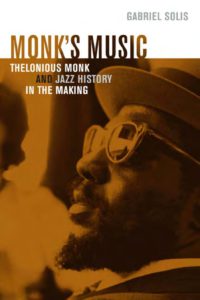Thelonious Monk Quartet
Maison de l’ORTF, Paris. 02/23/64 (with sheet music)
Personnel
Charlie Rouse (ts)
Thelonious Monk (p)
Edward “Butch” Warren (b)
Ben Riley (d)
Track Listing
Four In One
I’m Getting Sentimental Over You
Straight No Chaser
Well, You Needn’t
Epistrophy
Blue Monk
Sweet And Lovely
Hackensack
Rhythm-A-Ning
Bright Mississippi
Epistrophy(reprise)
Thelonious Monk is one of the greatest jazz musicians of all time and one of first creators of modern jazz.

Who Was Thelonious Monk?
Thelonious Monk is one of the greatest jazz musicians of all time and one of first creators of modern jazz and bebop. For much of his career, Monk played with small groups at Milton’s Playhouse. Many of his compositions have become jazz standards, including “Well, You Needn’t,” “Blue Monk” and “Round Midnight.” His spares and angular music had a levity and playfulness to it.
Early Life
Thelonious Monk was born on October 10, 1917 in Rocky Mount, North Carolina. When he was just four, his parents, Barbara and Thelonious, Sr., moved to New York City, where he would spend the next five decades of his life.
Monk began studying classical piano when he was eleven but had already shown some aptitude for the instrument. “I learned how to read before I took lessons,” he later recalled. “You know, watching my sister practice her lessons over her shoulder.”
By the time Monk was thirteen, he had won the weekly amateur competition at the Apollo Theater so many times that the management banned him from re-entering the contest.
At age seventeen, Monk dropped out of the esteemed Stuyvesant High School to pursue his music career. He toured with the so-called “Texas Warhorse,” an evangelist and faith healer, before assembling a quartet of his own. Although it was typical to play for a big band at this time, Monk preferred a more intimate work dynamic that would allow him to experiment with his sound.
Music Career
In 1941, Monk began working at Minton’s Playhouse in Harlem, where he joined the house band and helped develop the school of jazz known as bebop. Alongside Charlie Parker and Dizzy Gillespie, he explored the fast, jarring, and often improvised styles that would later become synonymous with modern jazz.
Monk’s first known recording was made in 1944, when he worked as a member of Coleman Hawkins’s quartet. Monk didn’t record under his own name, however, until 1947, when he played as the leader of a sextet session for Blue Note.
Monk made a total of five Blue Note recordings between 1947 and 1952, including “Criss Cross” and “Evidence.” These are generally regarded as the first works characteristic of Monk’s unique jazz style, which embraced percussive playing, unusual repetitions and dissonant sounds. As Monk saw it, “The piano ain’t got no wrong notes!” Though widespread recognition was still years away, Monk had already earned the regard of his peers as well as several important critics.
Thelonious Monk discography
List of compositions by Thelonious Monk
Awards and accolades
In 1993, he was awarded the Grammy Lifetime Achievement Award. In 2006, he was awarded a special Pulitzer Prize for “a body of distinguished and innovative musical composition that has had a significant and enduring impact on the evolution of jazz”.
The Thelonious Monk Institute of Jazz was established in 1986 by the Monk family and Maria Fisher. Its mission is to offer public school-based jazz education programs for young people around the globe, helping students develop imaginative thinking, creativity, curiosity, a positive self-image, and a respect for their own and others’ cultural heritage. In addition to hosting an annual International Jazz Competition since 1987, the institute also helped, through its partnership with UNESCO, designate April 30, 2012, as the first annual International Jazz Day.
Monk was inducted into the North Carolina Music Hall of Fame in 2009.
